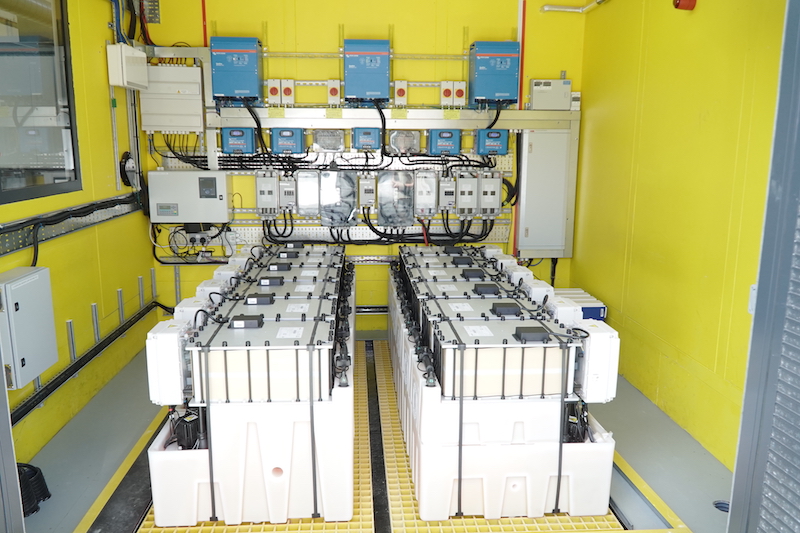A solar classroom at the campus of Swansea University will use Redflow’s ZBM2 zinc-bromine flow battery technology to test new realms of energy independence. The facility is part of the university’s living lab which aims to demonstrate a new concept for buildings of the future.
Rapid urbanization and climate change are closely interwoven with the building sector as one of the world’s largest greenhouse gas emitters and energy users. In Australia, for instance, buildings account for over 50% of electricity use and almost a quarter of the country’s carbon emissions. With buildings worldwide mostly built before the introduction of energy performance standards, the building sector is facing a major decarbonization challenge.
In the UK, the Active Buildings Center, a consortium of academic partners, is seeking to transform construction and energy sectors with the help of solar and other low/zero-carbon technologies. One of the first projects deployed under the program was a classroom at the Swansea University Bay campus, which already in the first year of its operation generated one and a half times more energy than it used.
The classroom has now integrated 120 kWh of Redflow batteries to complement its building-integrated, thin-film photovoltaic solar panels, as well as a solar wall that supplies the warm air to a heat-pump for space and water heating. Tom Griffiths, Technology Transfer Fellow (Smart Systems), said Swansea selected the Redflow technology because of its ability to deliver 100% of the rated system energy every day, without degradation in capacity over a long – 10 year – life.
“These characteristics were crucial considerations for us, and our application requires battery discharge duration of 4-8 hours depending on the time of year, making Redflow’s flow battery the ideal fit for our requirements in comparison to more conventional lead-acid or lithium alternatives,” Griffiths said.
Redflow said its small 10 kWh flow battery units provided the only commercially available flow battery energy storage system that allowed accurate sizing for the 120 kWh system. “This project with its dual renewable generation sources will be a bench-mark for flow-battery minigrids,” Redflow CEO & Managing Director Tim Harris said. “This is an emerging segment that Redflow is focussed upon, having recently deployed some PV-only minigrids in the agricultural sector in Australia.”
In some other oversea projects, Redflow was contracted to supply its zinc-bromine flow battery solution for a smart grid project sponsored by China’s National Energy Bureau, a far-flung village in northern Thailand and offgrid telecommunication sites in New Zealand.
Marketed as ZCell and ZBM2, Redflow 10 kWh zinc-bromine flow batteries are designed for high cycle-rate, long time-base stationary energy storage applications in the residential, commercial & industrial and telecommunications sectors, and are scalable from a single battery installation through to grid-scale deployments.
This content is protected by copyright and may not be reused. If you want to cooperate with us and would like to reuse some of our content, please contact: editors@pv-magazine.com.









Im intrested in flow battery